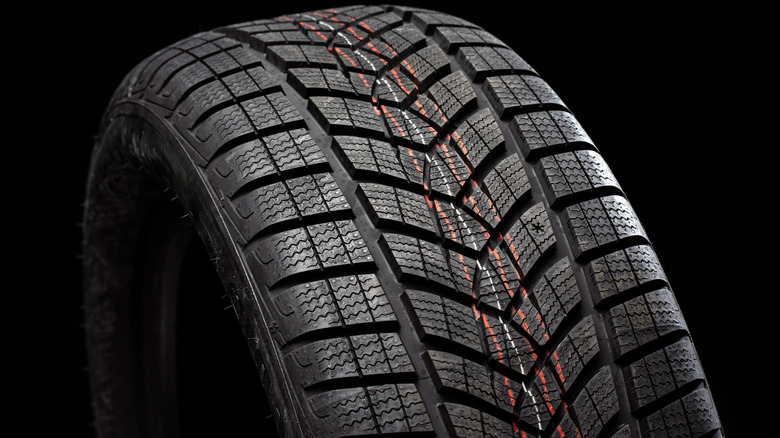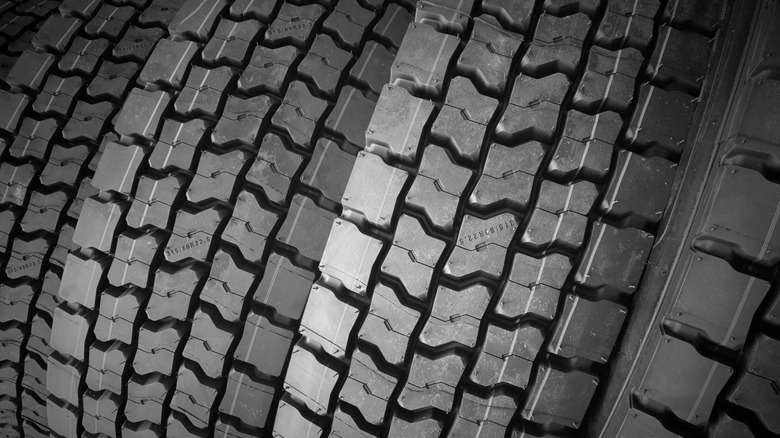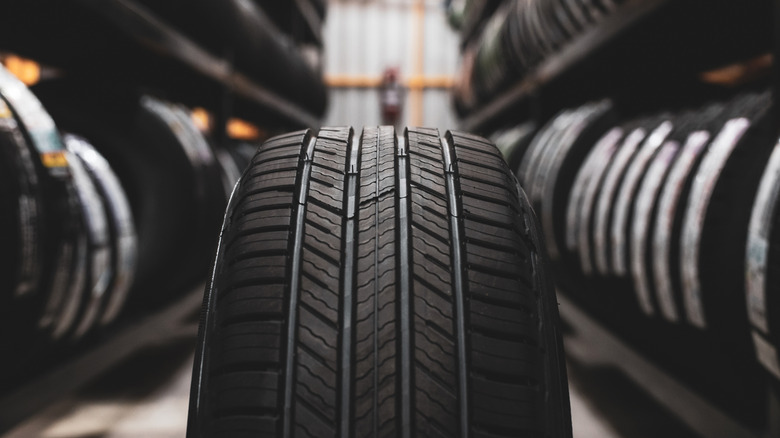Can You Use Different Tread Patterns On Front And Rear Tires?
Following simple car care routines is the secret to looking after your tires. But beyond monitoring your tire pressure and rotating your tires, there are other things you can do to make your tires last longer. Using the right kind of tires is a basic, yet crucial, way of maintaining your car tires. There are many tire brands, each making tires with different sizes and tread patterns. Tread patterns come in various types — directional, asymmetrical, and symmetrical — each with its own benefits. When the time comes to replace your tires, this might lead you to wonder if it's okay to have different tread patterns on front and rear tires.
Well, the answer is quite complicated. Tread patterns play a crucial role in a tire's performance by enhancing braking, traction, and handling. While you might be tempted to use different tread patterns on front and rear tires if it'll save a few dollars, a lot can go wrong. For instance, if you fit your front wheels with an aggressive directional tread and the rear wheels with a symmetrical tread, you'll change your car's balance. This could put your safety at risk, especially during harsh weather conditions and sudden manoeuvres.
Why tire tread consistency matters more than you think
Of course, mixing different tread patterns between your front and rear tires is technically possible. But it's not recommended because mixing tread patterns can affect how your car handles various driving conditions and impact your car's braking performance. Just like tire sizes, tread patterns are carefully designed for specific purposes. Directional treads, for instance, are designed to excel in wet conditions and during winter. These tires have V-shaped grooves angled to channel water and maintain grip at higher speeds. On the other hand, asymmetrical treads combine different patterns on the inner and outer parts of the tire to deliver balanced traction on dry roads and rainy conditions. There is also the symmetrical tread designed to stand out in all conditions.
So, if your rear wheels are optimized for dry roads, but the front aren't — or vice versa — you risk reducing your car's stability. However, there are specific circumstances where mixing tread patterns is acceptable. If your car is either front-wheel or rear-wheel drive, you might consider going with different patterns as long as both sets of tires fall within the same performance category, such as all-season or high-performance summer.
Other risks of mixing tread patterns on front and rear tires
Treads are not just there to complete the look of your tires; they're crucial for maintaining traction and balance in a car. Whether accelerating, braking, or steering, treads will offer the grip to keep you from sliding off the road. Any imbalance will be more noticeable when accelerating or braking on severe road surfaces. It's not just the traction issue; when cornering, mixed treads can cause understeering (where the front tires lose grip and your car continues straight) or oversteering (when the rear tires lose grip and the car fishtails). This can make your vehicle behave unpredictably — especially in snow, rain, or emergency manoeuvres.
Beyond affecting your car's stability, mixing different tread patterns introduces another overlooked problem: uneven tire wear. Each tread is designed to manage weight and heat differently. When you combine mismatched patterns on the exact vehicle, some tires will bear more stress than others. If some tires wear down faster than others, it will affect the car's fuel efficiency and performance levels.


